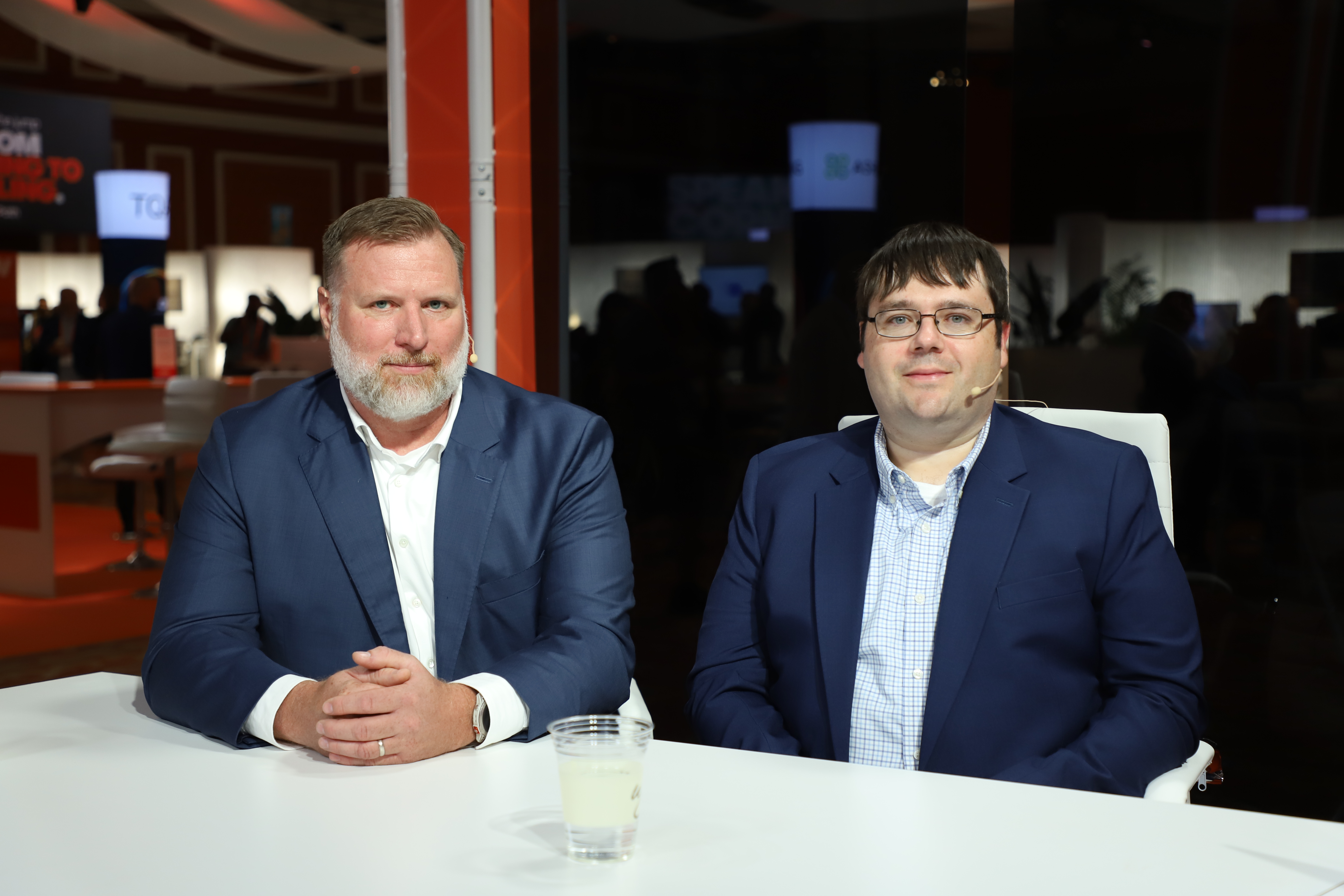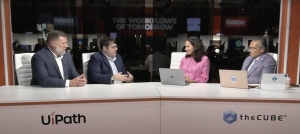 AI
AI
 AI
AI
 AI
AI
Healthcare automation is no longer a matter of hypothetical efficiency gains — it is becoming a defining metric of patient care. Hospitals strained by rising demand are turning to intelligent systems that can interpret nuance, escalate decisions and act in real time instead of waiting for overburdened staff.
The pressure for better outcomes is overhauling how health systems work with technology vendors. OSF Healthcare System — a nonprofit Catholic provider operating 17 hospitals across Illinois — has joined forces with UiPath Inc. to go beyond rules-based automation and into agent-based orchestration. The two organizations insist that healthcare automation must withstand unpredictable variables without placing patients at risk, according to Joe Gannuscio (pictured, right), director of advanced analytics development at OSF Healthcare.

UiPath’s John Sharpe and OSF Healthcare System’s Joe Gannuscio talk with theCUBE about how healthcare automation is evolving from basic operations to intelligent agents guiding clinical outcomes.
“Proof of concepts are easy; implementation is hard,” he said. “Getting that first iteration out is really quick, but building these robust, reliable systems with something that’s inherently non-deterministic can be a challenge — especially in the healthcare field, where we have to be especially careful [with] the data … making sure that we’re putting the appropriate guardrails in, putting in the appropriate validations and making sure that we’ve got robust handoff mechanisms.”
Gannuscio and John Sharpe (left), senior technical account manager at UiPath, spoke with theCUBE’s Rebecca Knight and Dave Vellante at UiPath Fusion, during an exclusive broadcast on theCUBE, SiliconANGLE Media’s livestreaming studio. They discussed the shift from traditional systems to agent-based healthcare automation. (* Disclosure below.)
The partnership is moving quickly as both teams push automation into higher-stakes territory rather than limiting it to incremental wins. Administrative work such as denials management and referral coordination — once too complex for healthcare automation — is now becoming viable when paired with language models and guardrail-based escalation paths, according to Sharpe.
“You’ve got to look for not only what will get you into production, but big problems,” he said. “Even if the problem is big and the barrier is AI council and all of these obstacles that can get in the way, I like to encourage customers to go for those big solution kit-level problems that everybody knows, that relate to the [chief financial officer’s] metrics, and get those out in front of people. If you get the business sponsor keyed in on that, everyone will come out of the woodwork and help you solve.”
Rather than discarding earlier automation investments, OSF Healthcare is layering intelligence on top of established operations. Early gains came from embedding agents into brittle workflows reliant on Robotic Process Automation, or RPA, so they could interpret inconsistent inputs and route edge cases to humans instead of breaking silently, Gannuscio said.
“One of the ones we have in production that I’ll talk about is around processing our medication refill faxes,” he said. “This is the one I was just alluding to where there was really messy, hairy logic because there’s a ton of variability, every pharmacy’s form looks different … It just drove brittleness into the automation. With the agent, we’re able to handle all of that very effectively. Then the human piece of it — UiPath just gives you the great tools with an action center. We can just hand it off, escalate it, get it tackled and then it picks right back up and continues.”
Here’s the complete video interview, part of SiliconANGLE’s and theCUBE’s coverage of UiPath Fusion:
(* Disclosure: TheCUBE is a paid media partner for UiPath Fusion. Neither UiPath Inc., the sponsor of theCUBE’s event coverage, nor other sponsors have editorial control over content on theCUBE or SiliconANGLE.)
Support our mission to keep content open and free by engaging with theCUBE community. Join theCUBE’s Alumni Trust Network, where technology leaders connect, share intelligence and create opportunities.
Founded by tech visionaries John Furrier and Dave Vellante, SiliconANGLE Media has built a dynamic ecosystem of industry-leading digital media brands that reach 15+ million elite tech professionals. Our new proprietary theCUBE AI Video Cloud is breaking ground in audience interaction, leveraging theCUBEai.com neural network to help technology companies make data-driven decisions and stay at the forefront of industry conversations.